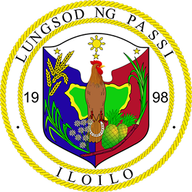(Info Taken from https://www.iloilo.gov.ph/municipality/passi-city)
Passi, officially City of Passi (Kinaray-a: Syudad kang Passi/Syudad ka Passi; Hiligaynon: Dakbanwa sang Passi; Filipino: Lungsod ng Passi) and often referred to as Passi City, is a fourth class city in the province of Iloilo in the Philippines. According to the 2010 census, it has a population of 79,663 people. It has a total land area of 25,139 hectares (62,120 acres), making up 5.39% of the provincial land area of Iloilo. Its relatively flat land stretches alongside the Jalaur and Lamunan rivers. Mountainous areas are found along the northern part of the city.
Passi is a rice and sugar-rich area. It is the only component city and the largest in the Province of Iloilo in terms of land area, population and income. It is popularly called the “Sweet City in the Heart of Panay” due to its vast pineapple plantations and annual output in fruit production.The topography of Passi is relatively dominated by rolling hills and narrow valley plains. The flat land stretches alongside the Jalaur and Lamunan Rivers. It has a total land area of 25,139.13 hectares making up 5.39% of the provincial land area of Iloilo. It is composed of 38 rural barangays and 13 urban barangays.
It was organized as a pueblo in 1766 but has actually been settled by Malay migrants long before the arrival of the Spaniards.In the traditional story, Spanish explorers came downstream. They anchored on a place farther west at the mouth of Lamunan River called Ansig. They stumbled on a small hut by the river bank where an old woman was found winnowing pounded palay. One of them asked her. “Como se Llama Este Lugar” not knowing the native language of course. Much to the old woman’s surprise and perhaps excitement, she replied without much ado “Pasi” which means some of the unhusked rice on her basket held in both hands. She must have thought that they were eager to know what was in the basket and what she was doing, because she could not understand their language. From that time on, the Spanish begun to call the place “Pasi” at first. The word later evolved to be known by its present “Passi.”
Passi then became progressive and had experience tremendous development over the period. Because of its strategic location, Passi became a center for trade and commerce bringing more investment opportunities to the municipality. Its high income, high population growth, and a big area of land has finally bring into the limelight and recognized as the first component city in the Island of Panay. After a hard-earned endeavor, its conversion as a city was made through the signing of R.A. 8469 on the 30th day of January, 1998 by the Former President of the Philippines, Pres. Fidel V. Ramos.

